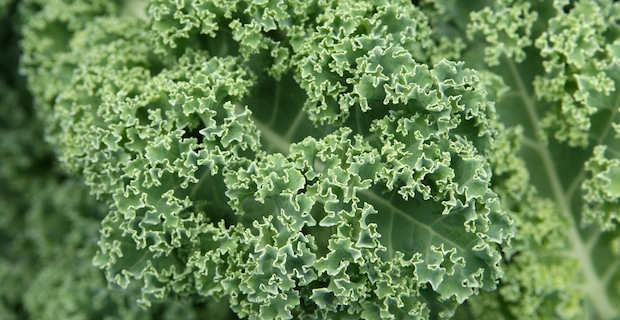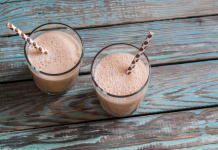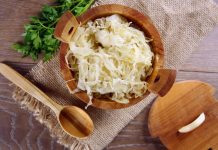
As a nutritional consultant, I am frequently asked which vegetable is most nutritious. I always suggest that it wise to eat a variety of vegetables from all colors of the rainbow-blue, green, yellow, orange, red-to ensure maximum nutrient intake. This answer, unfortunately, doesn’t always satisfy the “if I could only eat one vegetable, which should it be” crowd. While eating several different vegetables is always the best course of action, I decided to tell them that kale is the most nutritious vegetable.
The Center for Science in the Public Interest (CSPI) recently ranked kale as the most nutritious vegetable, and with good reason. While rather low in vitamin C, fiber and potassium, kale is incredibly rich in vitamin K and lutein. Vitamin K is best known for its role in blood clotting. In recent years, researchers have also suspected that vitamin K could boost bone density. Lutein is the key carotenoid in the lens of the eye and people who consume more lutein-rich foods may have a lower risk of macular degeneration. Kale is also high in the antioxidant vitamin A, making it a good vegetable to ward off free radicals.
Read more about antioxidant-rich food
History
A member of the cabbage family, kale is similar to collards but has leaves with curly edges and is less tolerant to heat. First brought to America by English settlers in the 1600s, today kale is grown across the country, with a growing season peak from the middle of winter through the beginning of spring.
Varieties
There are several varieties of kale – curly kale, ornamental kale, dinosaur kale – each with a different taste, texture and appearance. Curly kale is deep green in color and has ruffled leaves and a fibrous stalk. It has a lively, pungent flavor with a hint of pepper. Ornamental kale (aka salad savoy) has green, white or purple leaves with a mellow flavor and tender texture. Dinosaur kale (aka Lacinato) has dark blue-green leaves and is sweeter than curly kale.
How to Select and Store
Try to avoid greens that show dry or yellowing leaves, as this indicates insect injury or decay. Pick kale with smaller leaves as it will be easier to handle and have a milder flavor. Kale should be refrigerated in a crisper and wrapped in a damp paper towel or placed in a perforated plastic bag. It is best not to wash before storing as this will cause it to become limp. Kale can be kept in the refrigerator for several days, although the longer it is stored the more bitter it will become. Cooked kale will keep up to two days in the refrigerator.
Preparing
Before use, wash leaves thoroughly under cool running water to remove any sand or dirt. If it is not grown organically, soak it in a mild solution of additive-free soap, rinse thoroughly and dry with paper towels. Both the leaves and the stem of kale can be eaten.
Read more about eating the skins, stems and tops of vegetables
Serving Suggestions
Surprisingly, among the few people who have even heard of kale, many have never tried it because they don’t know what to do with it. This delicious, nutritious vegetable can be enjoyed either raw or cooked. Here are some quick serving ideas to add more kale to your diet
- Cut raw kale into small bite size pieces and add to mixed green salads or grain.
- Lightly sauté kale with fresh garlic and sprinkle with lemon juice before serving.
- Sauté red peppers, kale and garlic in extra virgin olive oil and add to spelt, rice or kamut pasta.
- Purée cooked kale, sweet potatoes and zucchini. Add vegetable broth for a quick and delicious soup.
- Cook minced onion in extra virgin olive oil until translucent in color; add kale and lemon rind until kale is wilted. Add cooked beans of any variety-chickpeas, navy, pinto, black or turtle beans.
- Place washed and trimmed kale leaves on a large roasting pan. Drizzle with olive oil. Roast in a 375 F for five minutes. Turn leaves over and roast for an additional seven minutes or until leaves are paper thin and brittle. Sprinkle with sea salt and eat immediately for a tasty “chip”.
- Kale pesto is easy and versatile as a topping for bread or mixed with pasta or grains. Place three cups washed kale in a food processor, add juice of one lemon, 1/2 sunflower seeds and 1 clove garlic. Mix on low speed and slowly add 1/2 extra virgin olive oil or flaxseed oil.
- Mix finely chopped kale with shredded carrots, grape tomatoes, red onion, and pine nuts. Drizzle with olive oil, sea salt, and cayenne pepper for a colorful and tasty salad.
- In a blender or food processor combine 1 banana, 4 kale leaves, 1 cup frozen blueberries, 1 cup of water or soy, rice or almond milk. Sweeten with stevia or pure maple syrup (if desired). Process until smooth for an energy-packed smoothie.
- Braise chopped kale and apples or pears, then sprinkle with balsamic vinegar and chopped walnuts or pecans just before serving.
Image: Quinn Dombrowski
References Centre for Science in the Public Interest, “Rating Rutabagas”: http://www.cspinet.org/nah/01_09/ratings.pdf
Murray, Michael N.D. The Encyclopedia of Healing Foods. New York: Atria Books, 2005.










